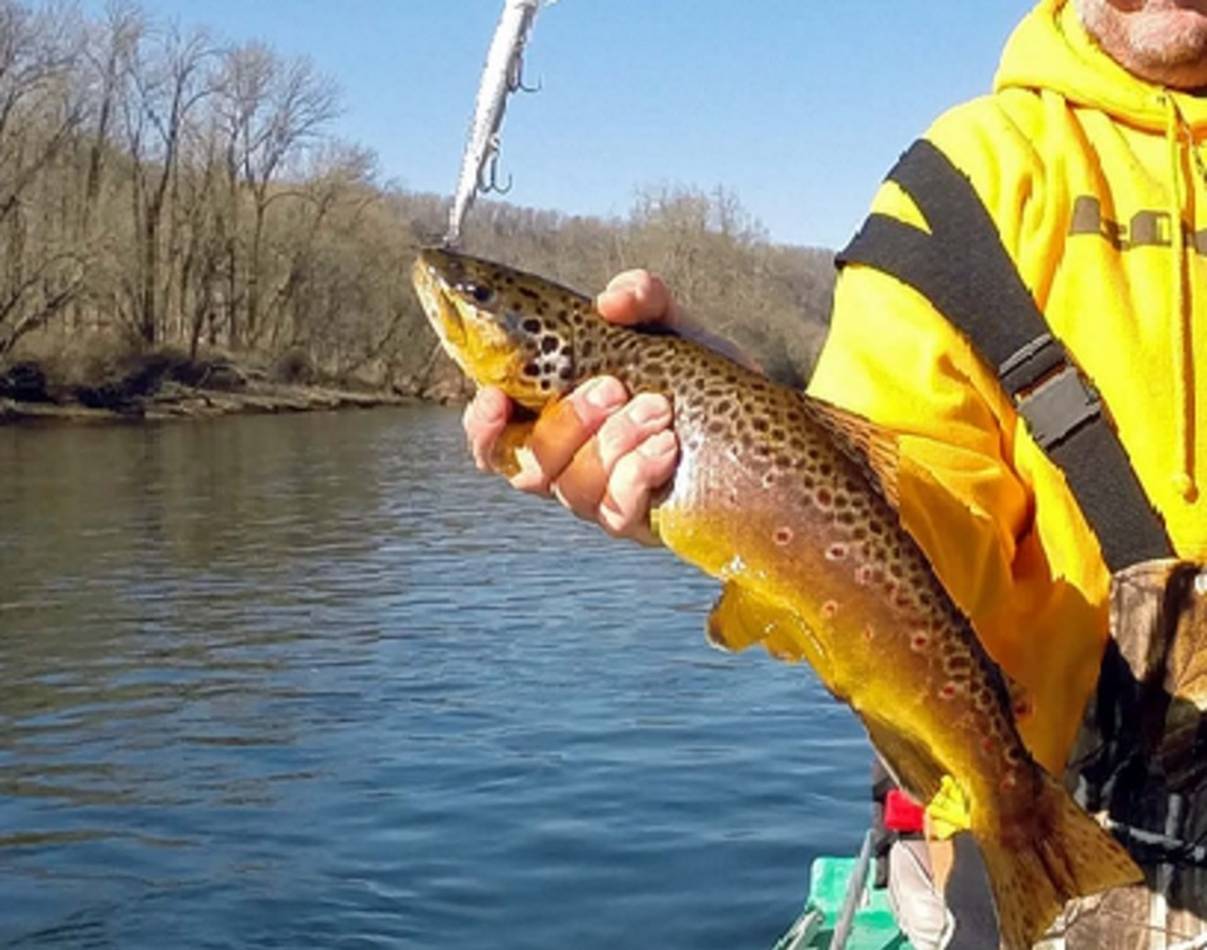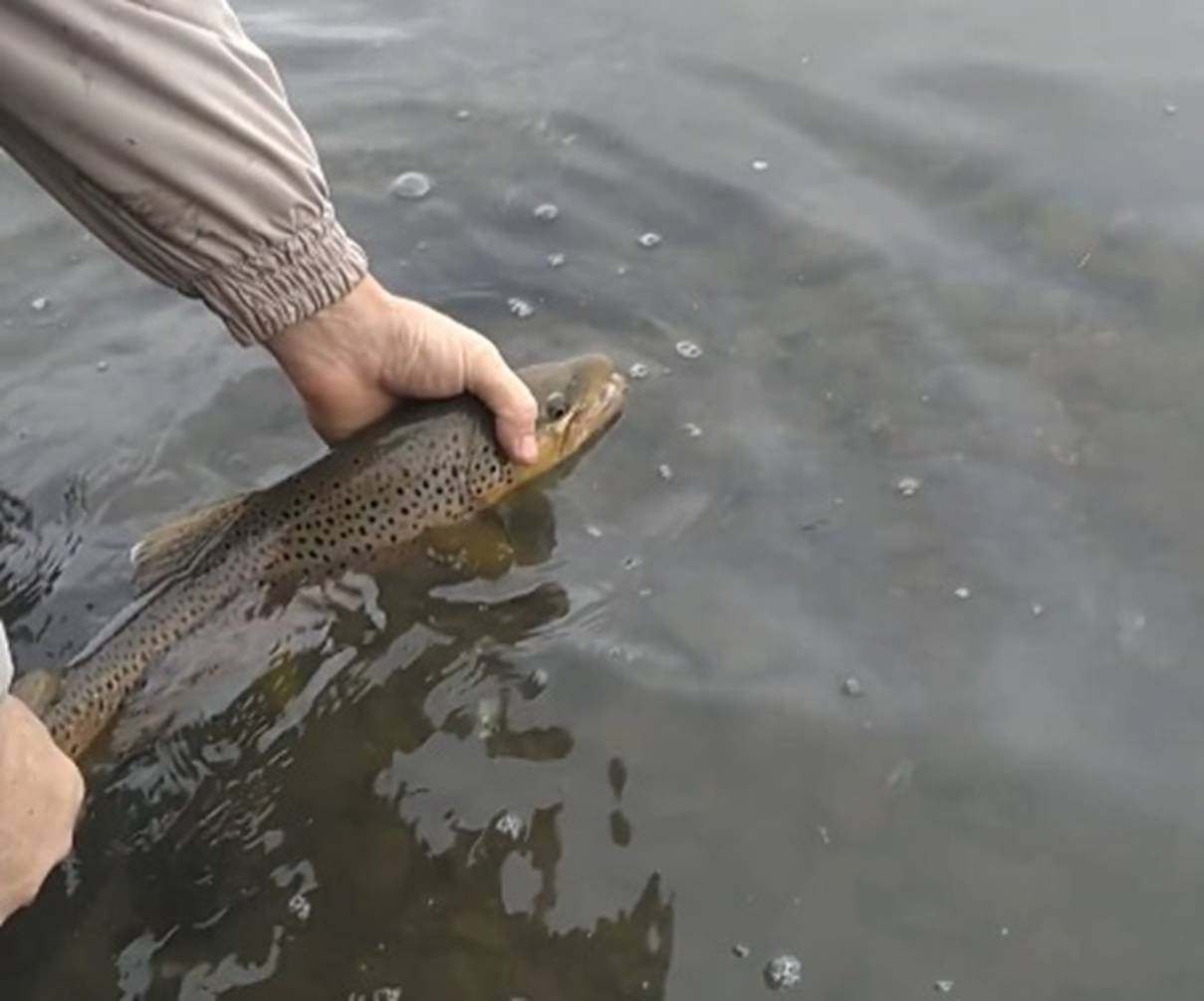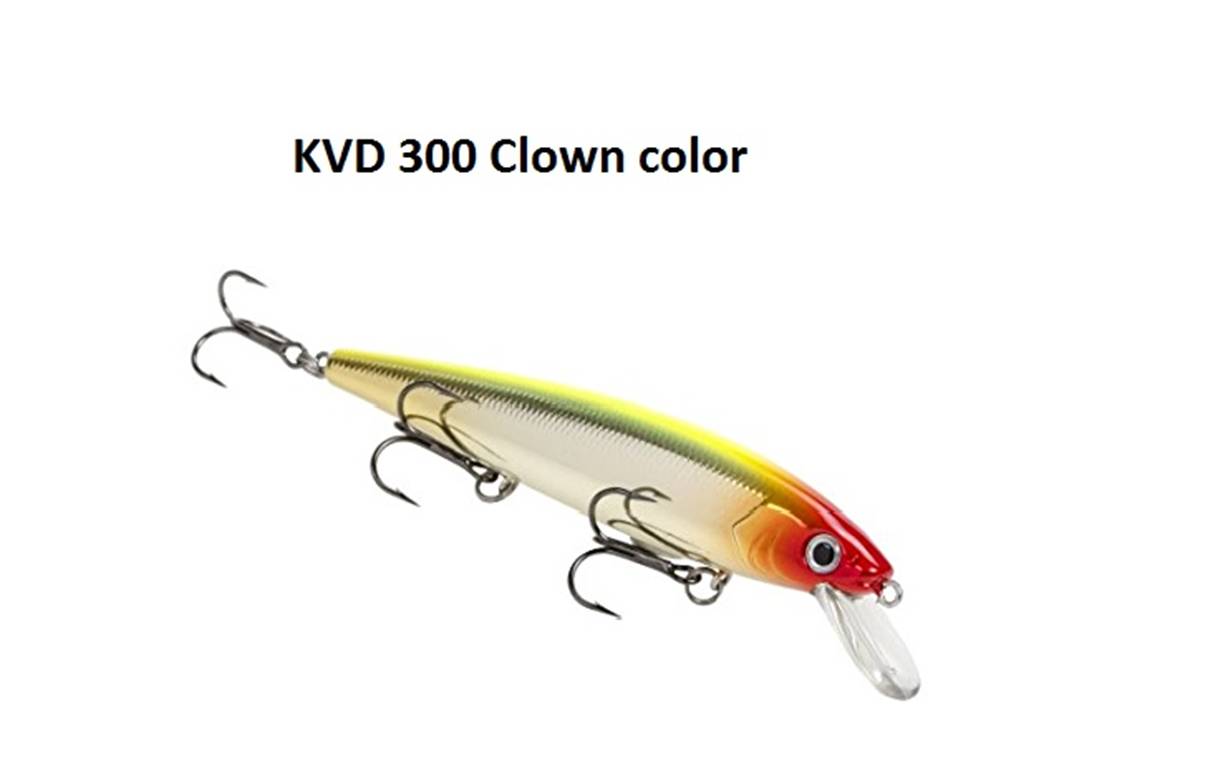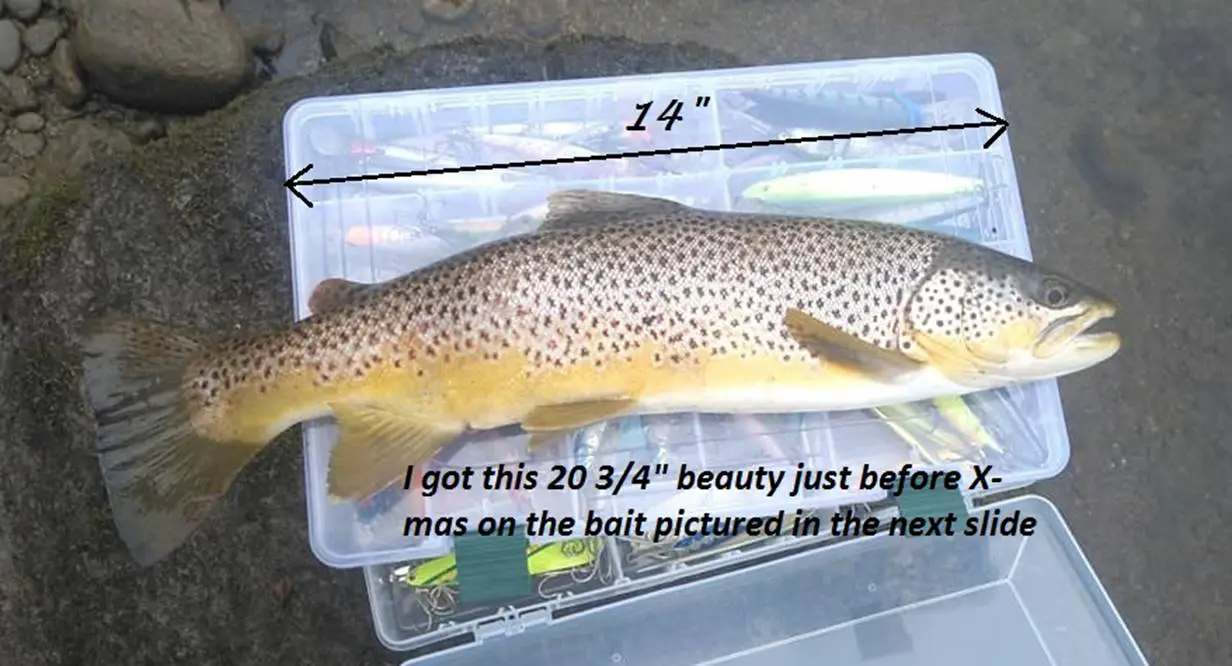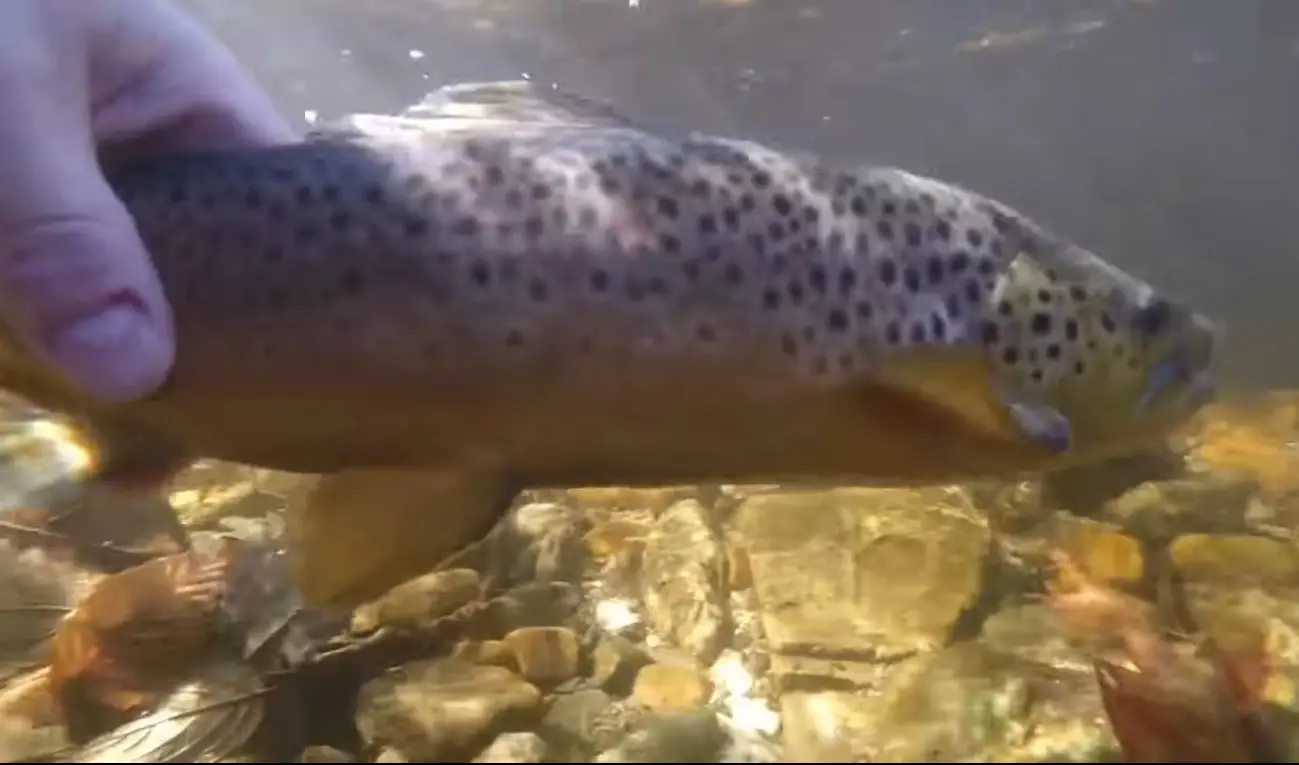Search
Latest Articles
Jerkbaits for Winter Brown Trout
by Rick Lawrence, January 10, 2021
Rivers like the Spokane, Yakima, Pend Oreille, and Columbia in Washington have some great Brown fishing as do the C.D.A. and P.O. in Idaho. I’m also blessed to live on a creek that is one of the best Brown trout fisheries in Idaho. Brown trout from this creek average 16” with fish over 20” fairly common. The record from the creek used to hang in the local store/café and it was 32” and probably over 10lbs. Unfortunately that store burnt down or I would have included a picture of that fish. My best from this creek was 26” and I did catch it on a jerkbait, but I didn’t get it in the winter.
Most of the time in the winter I fish the P.O. River from my boat and do good fishing Rapala X-Raps and Shadow raps with both the shallow and deep versions. One of the biggest advances in my brown trout fishing expertise came with my understanding of the brown trout’s aversion to light.
The best days to fish for browns is the dark, cloudy days, Brown trout will hide during bright light conditions. They, however, will feed aggressively during those dark, nasty days, when most anglers are home by the fireplace.
The darkest of days coaxes browns to shallow shoals, where they feed on everything from crayfish to sculpins and smaller rainbow trout. The Clown colored Smithwick Rattlin Rogue became my favorite jerk bait for these conditions. Strike King KVD 200 and 300 jerkbaits work, as do the Megabass vision 110 in both shallow and deep divers for Smallies and Browns along with an occasional Rainbow.
I fish these on a 6 ½ to 7 ft. med spinning rod spooled with 20 lb. Suffix braid tied to about a 6 ft. leader of 12lb. fluorocarbon tied on with the FG or Alberto knot and I always use a small Dou-lock snap to make changing baits out quick and easy. I use Suffix braid in the winter because it holds up well and doesn’t get stiff and brittle in cold weather like I have seen other braids do.
Brown trout are not afraid to chase moving baits in the winter, so most of the time I fish them pretty fast with a stop and go jerking retrieve. I cast at about a 45 deg. angle upstream and reel the lure down about 3 or 4 cranks then let it pause for half a second or so. Give it a few quick twitches and let it swing with the current for a second or two. Repeat this till the lure is either back to the boat or is strait downstream.
Jerkbaits work well for trout anywhere the trout grow large, with the tail waters of the pools being the best both because of the big fish they commonly grow and because of regular high-water periods. Large Brown trout, more so than their cousins, largely abandon insects as they get big for sculpins, squawfish, small spiny rays, other trout, and a host of other fish species as they grow in size. Although you can certainly catch big trout on tiny offerings, serving a serious meal favors catching bigger browns.
I often throw a classic Rapala, and my color of choice is chrome with a blue back and orange belly. Bright colors seem to work the best. Sleek modern jerkbaits like a Lucky Craft Pointer’s or Rapala Huskyjerk’s also work well. Given good water flow, I like a 4 to 5-inch jerkbait that that darts erratically without changing locations much with a sharp wrist snap and that suspends in the strike zone.
The biggest browns become very tough customers when the water flow is low, but medium-sized browns can still be persuaded to attack a jerkbait if it’s put in the right type of place.
When the river is ripping, browns hold tight to the bank, typically in little cuts, over submerged ridges or extra close to boulders or woody cover, and the higher the water the tighter they hold. Casts must hit the back of the pocket or be snug to the bank or the cover to hit the strike zone. I use a couple of turns of the reel handle to pull the bait down. Add a few twitches to engage its action and then allow a short pause so the lure drifts, suspended, and doesn’t move farther from the bank. After one more or two more jerks, I reel in and cast again to keep the bait in the prime zone.
Moderate flows open up more areas, but the fish become a little less aggressive and more likely to follow the bait, but never commit to it. Browns still like using shoreline cuts and eddies. Fishing behind trees, rocks and other current breaks will be the most productive, but they will also feed on top or along the gravel bars in the middle of the river.
The biggest browns definitely don’t bite lures as well when the water flows are low, and the big jerkbaits become substantially less effective. A good alternative is to use a similar approach but downsize for broader appeal.
A KVD 300 in chrome Sexy shad or Rapala with blue back and orange belly is a P.O. River standard for big trout, but various other suspending jerkbaits also work well.
Whenever the current is slow I spent most of my time throwing smaller baits like the KVD 200 jerkbaits instead of 5-inch long 300 size. I have enjoyed some good action from both browns and rainbows, most of which were in the 12 to 15-inch range, plus a couple of medium-sized Browns.
Of course, that’s not to say you cannot persist and catch a big fish when the water is low. My biggest Brown trout ever came from the P.O. River, a beautiful hook-jawed 28” 8 pounder monster that I hooked many years ago on a 7” swimbait while I was Pike fishing from shore. I had hiked into a spot that was far from any roads. It was about an hour to get to, without any real trails to fallow through about a foot of snow. I had fished that spot with my boat many times, but couldn’t at that time because my boat was out of commission. As I was hiking in I was thinking, “Is this really worth all this”. Turns out that worked pretty well.
